
All categories
Featured selections
Trade Assurance
Buyer Central
Help Center
Get the app
Become a supplier

(444 products available)











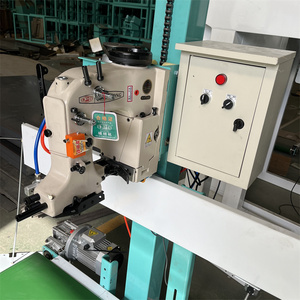

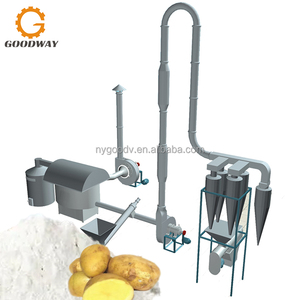
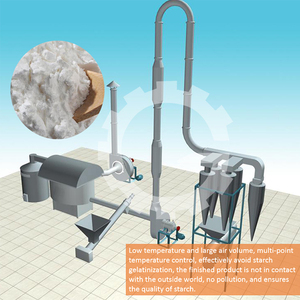
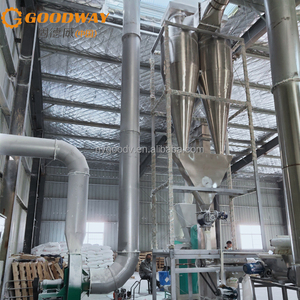
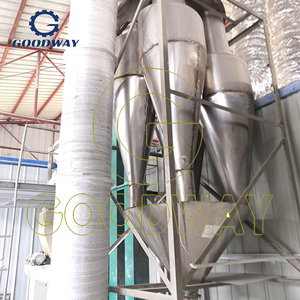






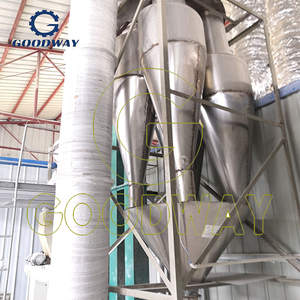
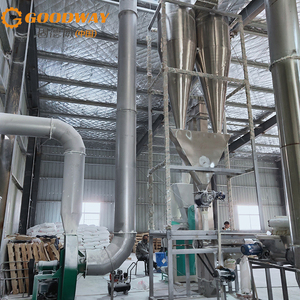
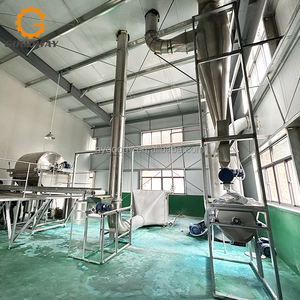

Starch is a carbohydrate produced by many green plants and a vital ingredient in various food and non-food industries. Small-scale starch production machines make it feasible to produce the substance economically and efficiently. The small scale starch production machine is a wide term that encompasses many types of process lines.
Usually, small-scale starch production machines use potatoes, corn, cassava, sago, rice, and taro as raw materials. Regardless of the raw material, the process typically includes washing, crushing, pulping, hydrocyclone separation, gelatinization, enzyme addition, fermentation, drying, and packing.
The specifications of small-scale starch production machines vary according to the type, manufacturer, and model.
Processing capability
Small-scale starch production machines usually have a smaller processing capacity than large industrial machines. Their capacity may range from several kilograms per hour to a few hundred kilograms per hour.
Raw materials
Some small-scale starch production machines are compatible with tuber crops such as potatoes, sweet potatoes, corn, and tapioca. However, others may be specially designed for particular crops.
Production flow
The small-scale starch production line includes the steps of crushing, extracting, purifying, drying, and packing. Some machines may integrate several processes, while others will be separated into individual units.
Power
The power of small-scale starch extraction machines is usually expressed in kw. It may range from single kw to tens of kw, depending on the size and processing capacity of the machine.
Generally, the small-scale starch machines are not as complicated as their large-scale counterparts. Thus, they are fairly easy to maintain. However, regular check-ups and maintenance are still necessary to ensure efficiency uninterrupted operation. Here are some helpful instructions for the maintenance of small-scale starch processing machines:
Regular cleaning:
All the starch production machines should be regularly cleaned to avoid residue build-up and contamination. The operators can use water and neutral detergent to wipe the surface of the machines and the removable parts. They should pay attention to electrical components, avoiding water ingress. Also, the production lines should be dried and stored in ventilated places.
Lubrication:
Whether it is an emulsifying starch production machine or an extraction one, each machine comes with transmission parts that require regular lubrication to avoid unnecessary abrasion. The operators can apply lubricating oil to the sliding surfaces, bearings, etc.
Routine Inspecting:
The small-scale starch production machines should be inspected after a period of use. The inspection should include the fastening pieces and parts, oil seals, transmission belts, etc. Any loosen, wear, or malfunction should be repaired or replaced in time to ensure that the equipment is safe and reliable to use.
Electrical Parts Maintenance:
Electrical components of small-scale starch production machines should be kept clean and dry, too. Users should check the wires connecting terminals regularly, ensuring there is no loosening, breakage, or corrosion. If there are any issues, they should handle them immediately.
Here's a closer look at some usage scenarios for small scale starch production machines:
When purchasing the small scale starch production machine, buyers should carefully study their need for the machines and the benefits they will derive when they finally get the machine. More than just food processing, starch production has enormous potential far beyond mere culinary pursuits. It serves as an indispensable cornerstone, providing essential raw materials for diverse industries ranging from textiles to pharmaceuticals; even the paper industry relies heavily upon starch's capabilities.
A starch production machine with a small scale can refine various root crops into valuable starches tailored for specific market demands. Buyers must consider the machine's versatility, efficiency, and adaptability, as well as the quality of starch it can produce, which should meet the expectations of end consumers. Additionally, understanding the machine's compatibility with different types of root crops is crucial in determining its effectiveness and productivity in starch extraction.
It is essential first to realize the purpose and benefit of the starch production machine and what kind of crops it can refine, which will make the purchasing process go smoother. A small scale starch extractor machine for sale will offer more than just starch extraction; it will also provide processing opportunities for businesses looking to invest in small-scale food processing facilities. Investing in such machines presents an opportunity for entrepreneurs not only to tap into local markets but also to meet export demands by supplying processed food products overseas.
In addition to these factors, buyers should also consider the following when searching for a supplier:
Q1: What are the sources of starch?
A1: Starch is a carbohydrate produced by plants as an energy storage molecule, and numerous crop plants have high starch content in their roots and tubers. Such plants include potatoes, sweet potatoes, cassava, corn, wheat, and tapioca. However, the small scale starch production machine is mostly used on cassava and corn.
Q2: What is the process of extracting starch?
A2: The process begins by choosing the right source of starch, which is usually tuber or seed-based. The material is then cleaned to remove any impurities present in or on the starch source. Depending on the source of starch, some materials will need to be sliced or ground to expose the starch to extraction methods better. Next, hydrolysis is the most vital step in starch extraction. Hydrolysis refers to the enzymatic or chemical breakdown of the starch into glucose. For the extraction of starch to be successful, specific enzymes will be added to the raw material to aid in the breakdown. Once hydrolysis has occurred, the solution will be filtered to separate the sugar from the remaining material. The sugar will then be fermented using fermentation tanks, where yeast will be added for conversion to alcohol. Distillation will be carried out after fermentation, separating the ethanol from the grain or tuber. Finally, evaporation will remove the excess water from the ethanol, and there is the starch.
Q3: What is the difference between food starch and industrial starch?
A3: Industrial starch has a higher adhesive strength requirement and a high demand for its gelatinization capacity when heated. Additionally, it is sought after for its film-forming ability and ability to bind, emulsify, and thicken. Such qualities are necessary for construction, textiles, paper, and biotechnology. Food starch doesn’t have such requirements and is usually sought after for digestibility and nutritional value.
Q4: What is the difference between modified and unmodified starch?
A4: Unmodified starch has retained its natural characteristics and is used in its natural form. Modified starch has been altered to improve its stability, which will further enhance its functional ability.
Q5: How much does a starch production machine cost?
A5: Small scale starch production machines are usually thousands of dollars, while large scale machines will be tens of thousands.